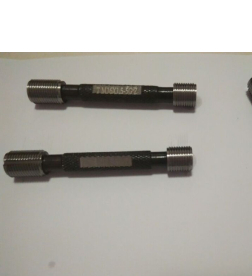Дек . 17, 2024 11:35 Back to list
how to replace water valve
How to Replace a Water Valve
Replacing a water valve may seem like a daunting task, but with the right tools and a little bit of know-how, you can tackle it confidently. Water valves are essential components of your plumbing system, controlling the flow of water in various applications, such as to your washing machine, sink, or outdoor faucets. Over time, valves can corrode or wear out, leading to leaks and loss of water pressure. This guide will walk you through the steps of replacing a water valve safely and effectively.
Tools and Materials You Will Need
Before you begin, gather the necessary tools and materials - New water valve (make sure it matches the existing one) - Pipe wrench or adjustable wrench - Plumber's tape (Teflon tape) - Bucket or towel (to catch any water spills) - Pipe cutter (if necessary) - Adjustable pliers - Safety goggles and gloves
Step 1 Turn Off the Water Supply
The first and most crucial step in replacing a water valve is to shut off the water supply. Locate the main water supply valve, usually found near the water meter, and turn it clockwise until it is fully closed. If the valve you are replacing is part of a specific fixture, such as a sink or toilet, you may be able to find a local shut-off valve that serves just that fixture.
Once the water supply is off, open the faucet connected to the valve you are replacing. This will help relieve any pressure in the system and allow any remaining water to drain out, minimizing spills during the replacement process.
Step 2 Inspect the Existing Valve
Take a few moments to inspect the old valve. Look for any signs of damage, corrosion, or leaks. This will give you an idea of what type of valve you need and help you determine whether further repairs to the surrounding pipes are necessary.
Step 3 Remove the Old Valve
Using your adjustable wrench or pipe wrench, grasp the old valve and begin loosening it. Depending on the type of valve and its installation, you may need to separate it from the pipes on either end. If the valve is soldered in place, the cutting tool will be necessary to remove it. Be cautious and ensure you are cutting only the valve and not the surrounding pipes.
how to replace water valve

Once the old valve is out, clean the threads on the pipe to ensure a good seal with the new valve. Inspect the pipe for any signs of damage; if you notice any issues, you may need to address these before continuing.
Step 4 Install the New Valve
Before installing the new valve, wrap plumber's tape around the threads of the pipe. This tape will help to create a watertight seal, preventing leaks. Make sure to wrap the tape in a clockwise direction to ensure it doesn’t unravel when you screw the new valve on.
Carefully screw the new valve onto the pipe, tightening it by hand initially. Once it’s snug, use your wrench to tighten it further. Be cautious not to overtighten, as this can lead to damage or cracking.
Step 5 Test for Leaks
After installing the new valve, it’s essential to test for leaks before putting your system back into regular use. Slowly turn the water supply back on, starting at the main valve or the local shut-off valve. Watch the joint where the new valve connects to the pipe for any signs of leaking. If everything looks good and there are no leaks, proceed to the next step.
Step 6 Final Touches
Finally, reattach any fixtures, handles, or access covers that you may have removed during the process. Clean up any water spills and double-check that everything is in order.
Conclusion
Replacing a water valve is a manageable DIY task that can save you money on plumbing costs. By following these steps, you can ensure that your home’s plumbing system remains functional and efficient. Remember to take proper safety precautions, and don’t hesitate to call a professional plumber if you encounter challenges beyond your comfort level. Happy plumbing!
-
Why Metric Trapezoidal Thread is Ideal for Precision Motion ControlNewsAug.05,2025
-
The Unique Properties of a Block of Granite for Industrial UseNewsAug.05,2025
-
The Role of Flanged Y Strainers in Preventing Pipeline ClogsNewsAug.05,2025
-
The Importance of Regular Calibration for Master Ring GagesNewsAug.05,2025
-
How a Cast Iron Surface Table Enhances Accuracy in ManufacturingNewsAug.05,2025
-
Comparing Different Check Valve Types for Optimal Flow ControlNewsAug.05,2025
Related PRODUCTS









